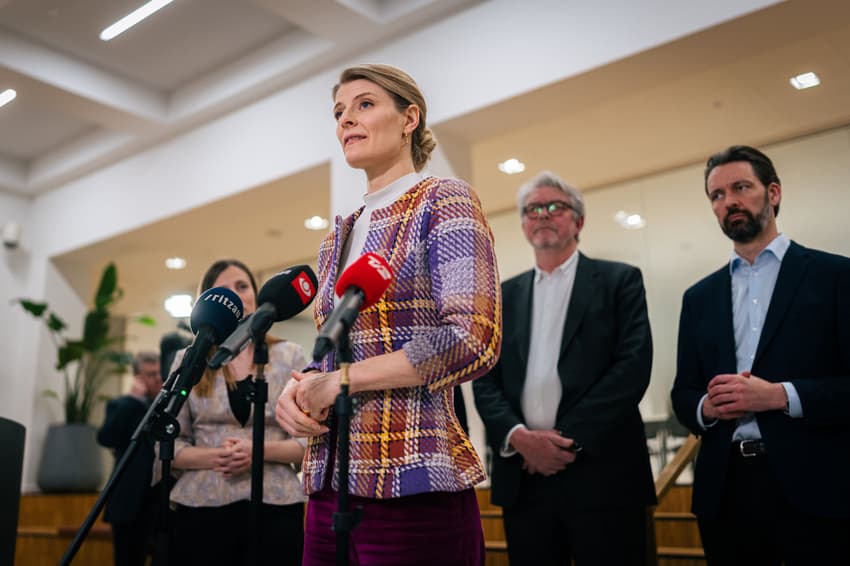Danish government agrees inflation package for vulnerable families

The government has agreed with three opposition parties on a package providing financial help to 40,500 young families in Denmark.
Spending of 300 million kroner will provide for cash payouts to vulnerable families who are struggling to cover costs as a result of inflation, the employment ministry announced late on Thursday.
Three left wing parties: the Socialist People’s Party (SF), Alternative and Social Liberals, have joined the coalition government in agreeing on the package.
A recent winter inflation spending plan designated the 300 million kroner amount for the purpose of assisting families. Thursday’s deal sets out how that money will be allocated.
It replaces a previous subsidy for families with children, known as børnetilskud, which expires on March 1st.
READ ALSO: Danish government announces winter inflation help
Although it replaces the earlier scheme, criteria for its distribution are changed although families who received the old subsidy will also qualify for the new one, the government said.
Families who receive the cash benefit are families in which one or both parents received benefits via the basic system of unemployment benefit, kontanthjælp, in January. Alternatively, parents who were under the connected return-to-work benefit ressourceforløbsydelse in January can also qualify.
The money will be paid out in two instalments, the first by the end of June and the second in August.
The amount each family receives is determined by the number of children in each family. Families with one children will receive 7,500 kroner, families with two children receive 11,250 kroner, and families with three children will receive 13,500 kroner.
The amount is tax free and does not count towards the overall benefit total received by the parents. It is a one-off scheme and as such will not be repeated in 2024.
“What we are doing with this agreement is ensuring the poorest families get help with inflation. This is the same group [that received the previous subsidy, ed.] and we have added more, so we will reach 65,000 children,” Employment Minister Ane Halsboe-Jørgensen said.
SF’s employment spokesperson Karsten Hønge said at the same briefing that SF was unhappy to see the previous arrangement discontinued because it provided for financial help to vulnerable families each year for as long as it was extended.
The party will therefore be “right behind this government to make sure this money is there next year. Because these families can’t do without this money, inflation or not,” he said.
Comments
See Also
Spending of 300 million kroner will provide for cash payouts to vulnerable families who are struggling to cover costs as a result of inflation, the employment ministry announced late on Thursday.
Three left wing parties: the Socialist People’s Party (SF), Alternative and Social Liberals, have joined the coalition government in agreeing on the package.
A recent winter inflation spending plan designated the 300 million kroner amount for the purpose of assisting families. Thursday’s deal sets out how that money will be allocated.
It replaces a previous subsidy for families with children, known as børnetilskud, which expires on March 1st.
READ ALSO: Danish government announces winter inflation help
Although it replaces the earlier scheme, criteria for its distribution are changed although families who received the old subsidy will also qualify for the new one, the government said.
Families who receive the cash benefit are families in which one or both parents received benefits via the basic system of unemployment benefit, kontanthjælp, in January. Alternatively, parents who were under the connected return-to-work benefit ressourceforløbsydelse in January can also qualify.
The money will be paid out in two instalments, the first by the end of June and the second in August.
The amount each family receives is determined by the number of children in each family. Families with one children will receive 7,500 kroner, families with two children receive 11,250 kroner, and families with three children will receive 13,500 kroner.
The amount is tax free and does not count towards the overall benefit total received by the parents. It is a one-off scheme and as such will not be repeated in 2024.
“What we are doing with this agreement is ensuring the poorest families get help with inflation. This is the same group [that received the previous subsidy, ed.] and we have added more, so we will reach 65,000 children,” Employment Minister Ane Halsboe-Jørgensen said.
SF’s employment spokesperson Karsten Hønge said at the same briefing that SF was unhappy to see the previous arrangement discontinued because it provided for financial help to vulnerable families each year for as long as it was extended.
The party will therefore be “right behind this government to make sure this money is there next year. Because these families can’t do without this money, inflation or not,” he said.
Join the conversation in our comments section below. Share your own views and experience and if you have a question or suggestion for our journalists then email us at [email protected].
Please keep comments civil, constructive and on topic – and make sure to read our terms of use before getting involved.
Please log in here to leave a comment.